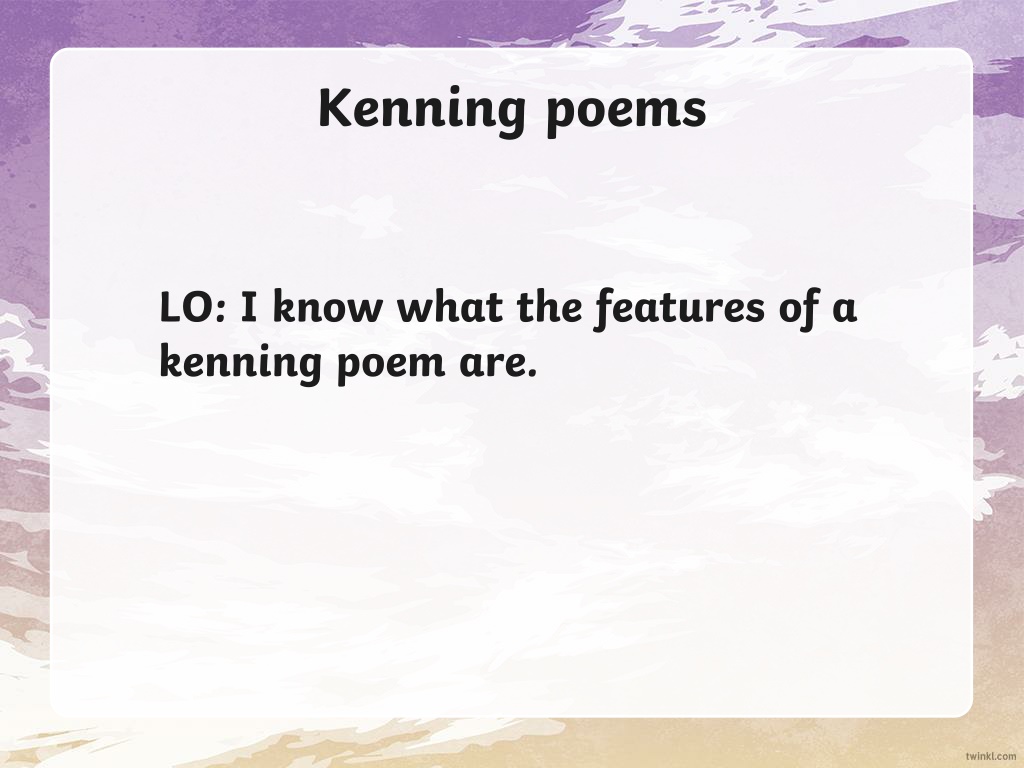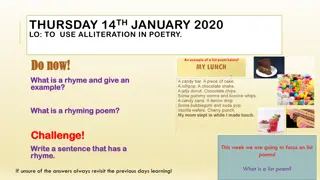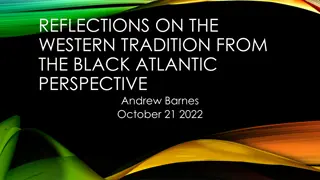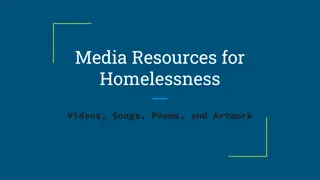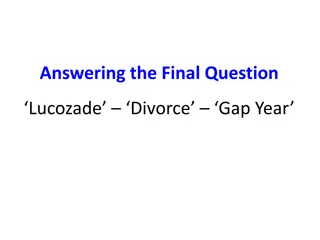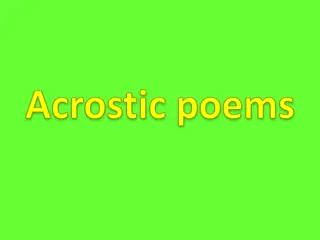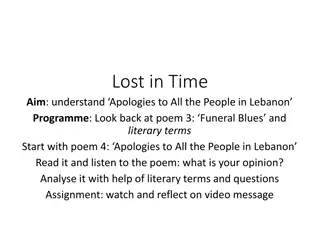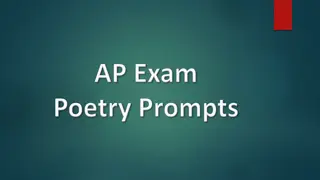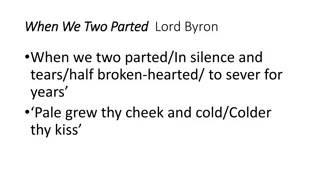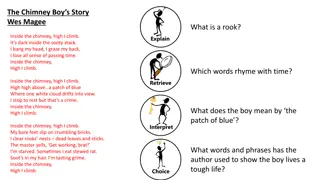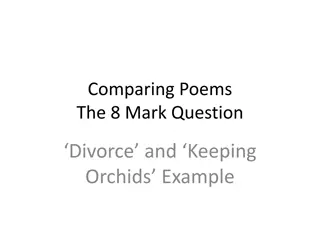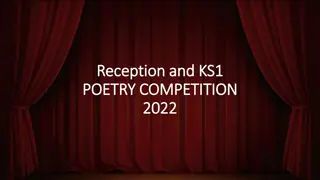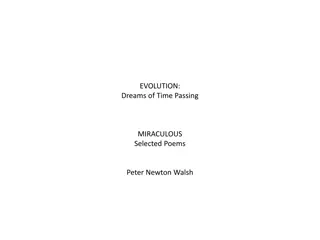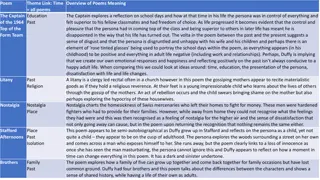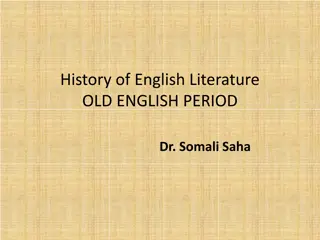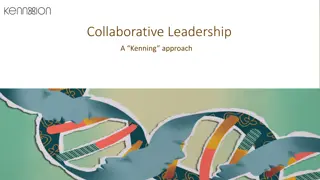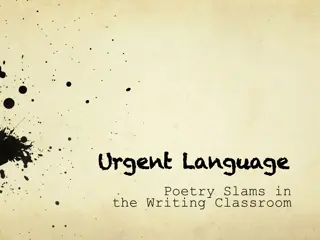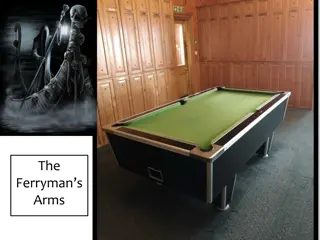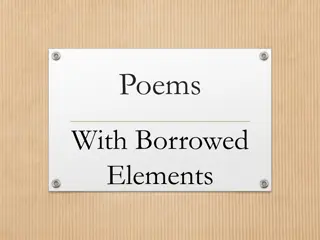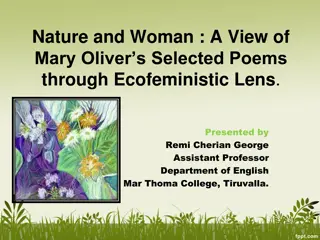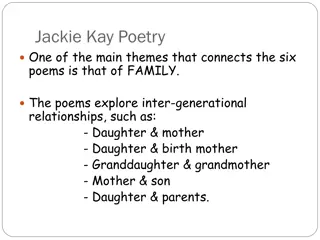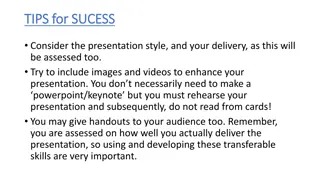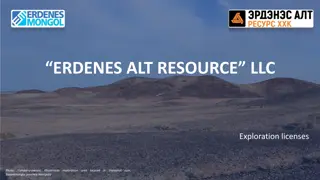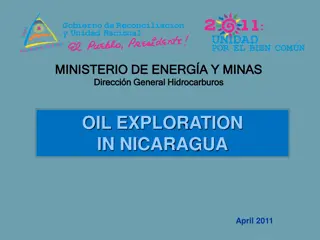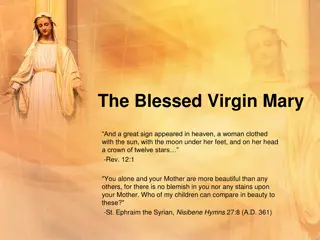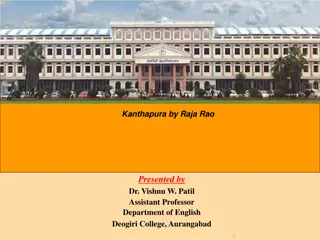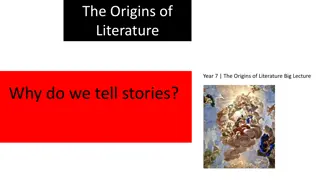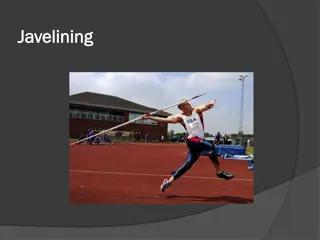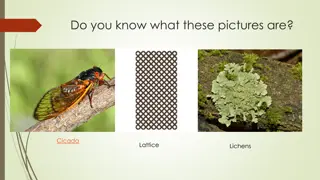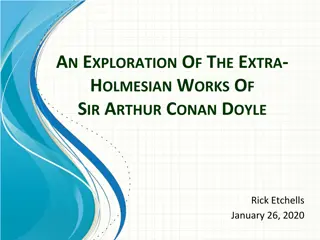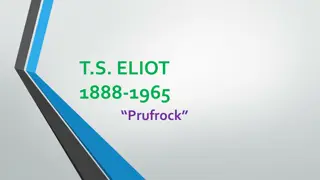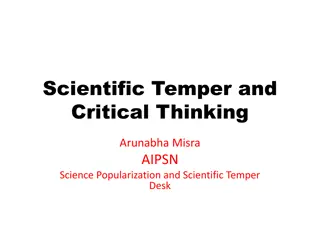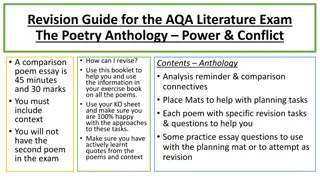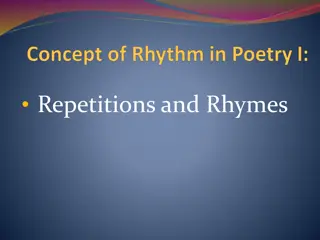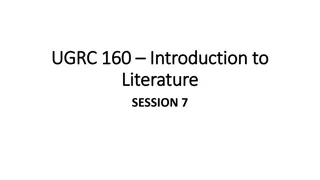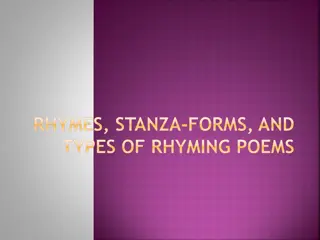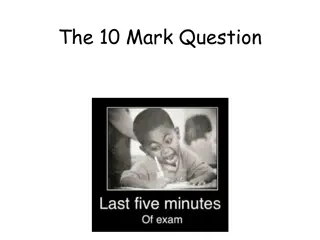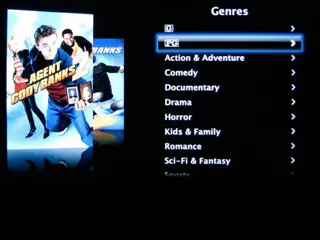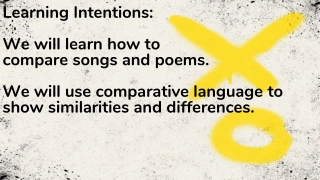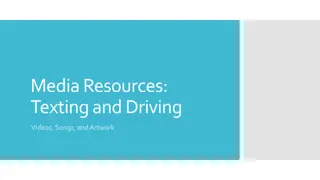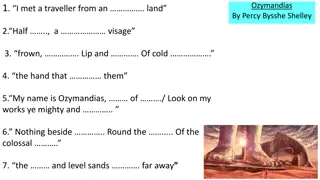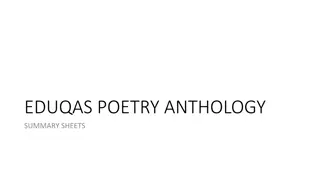Understanding Kenning Poems: An Exploration of Old Norse Tradition
Kenning poems are like riddles that describe something without explicitly stating it. This poetic form originated from Old Norse tradition, bringing elements of Anglo-Saxon and Norse cultures into our language. Kennings feature two-word phrases joined by a hyphen, typically composed of a noun and a verb or two nouns. They are still used in everyday language, showcasing the influence of this ancient poetic device.
Download Presentation

Please find below an Image/Link to download the presentation.
The content on the website is provided AS IS for your information and personal use only. It may not be sold, licensed, or shared on other websites without obtaining consent from the author. Download presentation by click this link. If you encounter any issues during the download, it is possible that the publisher has removed the file from their server.
E N D
Presentation Transcript
Kenning poems LO: I know what the features of a kenning poem are.
What is a kenning? Kennings are like riddles. They describe something without ever saying what it is. Read these phrases out loud. What could they be describing? lip-licking sauce-swirling chin-dripping cone-filling flake-holding tongue-freezing
What is a kenning? How about these? tail-wagger face-licker ball-catcher house-guardian furry-friend cat-chaser
What is a kenning? What did you notice about the poems? tail-wager lip-licking face-licker chin-dripping ball-catcher sauce-swirling house-guardian cone-filling furry-friend flake-holding cat-chaser tongue-freezing
What is a kenning? What did you notice about the phrases in each poem? Each line of the poem is made of a two-word phrase. The words are joined by a hyphen. lip-licking house-guardian chin-dripping furry-friend Here the phrases are made up of a noun + a verb (the verb usually ends in -ing). Here the phrases are made up of a noun + a noun.
Did you know? The two-word format for a kenning relates to the Old Norse tradition of naming things like weapons, e.g. Skull-Splitter or Blood-Taker. Kennings came into our language via the Anglo-Saxon and Norse cultures. These people came from what is now Scandinavia and northern Germany. The word kenning derives from the Old Norse word kenna eitt vi , which means to express a thing in terms of another .
We even use them in everyday language! How do we describe a very tall building? A really sad film or story is often called a... Oh look here s some alliteration! Other poetic devices can also be found in kennings. sky-scraper tear-jerker
What is this kenning about? BEwARe! by James Carter There's a ... jaw-snapper teeth-gnasher river-swimmer dives-for-dinner fish-catcher back-scratcher cave-seeker winter-sleeper forest-dweller grizzly-fella
Lets have a go! How can we write a kenning? First, we need to choose a theme. (It doesn t have to be gory, like the Vikings!) cat Then, we brainstorm lots of words or phrases associated with that theme drinks milk nuzzle mice sleeps a lot fur scratch stalk rubs ankles purr night hates dogs hunter
Lets have a go! How can we write a kenning? To start creating your kenning, try and make a noun + noun phrase or a noun + verb phrase using your words. nose night drinks milk nuzzle lick stalk ear fur sleeps a lot scratch purr rubs ankles hunter night hates dogs mice
Lets have a go! How can we write a kenning? Finally, put them together in your two-word phrases. Don t forget the hyphens! mouse-hunter milk-drinker night-stalker fur-licker ankle-rubber dog-hater nose-nuzzler ear-scratcher loud-purrer
Lets have a go! Try writing your own kenning. Here are a few ideas... teacher football mums or dads pizza winter pets car Once you ve chosen your theme, create a word bank, then start making your two-word phrases.
What have we learned about Kennings? Kennings are like riddles they describe a thing but don t tell you its name. They usually have only two words- a noun plus a noun OR a noun plus a verb. Poetic devices like alliteration can be used. They re great when you read them out loud so you can imagine the thing being describe.
